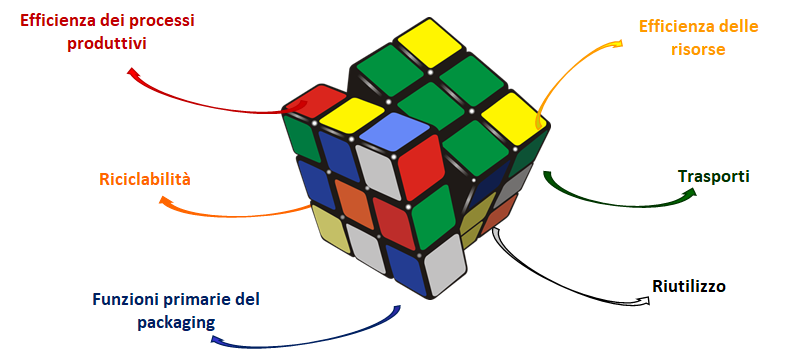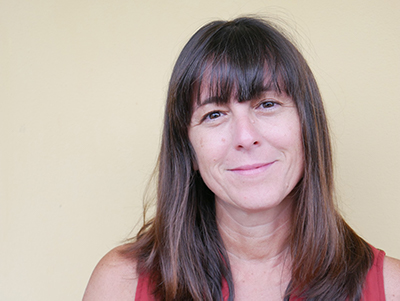ECO-DESIGN: the Conai competition Episode 3
Called upon to join the jury that will have to analyze the 319 products entered in the 2021 edition of the CONAI Call for Proposals and declare the winners, Barbara del Curto* talks about the new awareness of the industry in designing sustainable packaging. In addition to establishing the rules of less environmental impact, among their priorities are the analysis of the end of life of a packaging, the methods of collection and recycling, as well as new ways to make consumers more aware.
|
Barbara Del Curto è professoressa ordinaria di design presso il dipartimento di Chimica, Materiali e Ingegneria Chimica “Giulio Natta”, Politecnico di Milano. |
As a juror of the CONAI Call, how would you describe the trend you have seen in the “sustainable” behaviors of companies in recent years? In what directions are they moving, when?
they review their packaging in an eco-design key?
The really interesting trends emerge when companies that approach the topic of sustainability understand that it is not just a marketing choice, but a lever to make innovation.
Being sustainable, therefore, ceases to be a limit or an obligation to be fulfilled, but a starting point. Many companies, over the years, have begun this journey by replacing one material with another.
This is not always the right choice: sometimes replacing a material, such as plastic, is not enough if the impact of a product throughout its lifecycle is not fully assessed. It must be said that, especially in more recent years, many companies are realizing this.
They’re committing to doing broader assessments of the overall impact of what they sell, starting with an awareness of what the end-of-life of their packaging may be: it’s essential if they really want to know what impact a product may have on the environment.
With this in mind, I want to add another thought: there is a growing awareness that sustainable is not synonymous with “poor” or “sad”. The search for packaging solutions with lower environmental impacts can also bring beautiful and definitely practical innovations!
• Has any type of innovation struck you in particular?
Over the past few years, we’ve seen companies focus on several interesting aspects. For example, many have chosen to work on the sleeve of bottles or flasks, making it detachable. This may seem like an insignificant intervention, but it’s a very smart design change, because separating the packaging from its cover label makes it easier to recycle both. Then let’s think about the recent introduction of the cap on plastic bottles that remains attached to the ring joined to the neck of the bottle: if attention is paid to hygiene, this is a great innovation that helps not to disperse the caps for recycling. I am also reminded of the Sprite brand which renounces the iconic green color of its bottle by opting for a bottle made of transparent plastic, which can be more easily recycled. In short, the focus is shifting from the substitution of the material to the recyclability of the material itself: after all, a truly sustainable design can take place only if the recycling processes and the difficulties that can hinder them are well known.

• On which research and development activities is the business world of our country oriented today to make its packaging more and more sustainable?
Companies are increasingly interested in investigating the end of life of a packaging and in knowing the processes that lead to recycling it. We can see this, for example, if we think of polylaminates: there is more and more attention to give the consumer the possibility to separate different materials in order to confer them separately in segregated collection. I believe that the business world is also increasingly thinking about the possibility and the ways to reduce both the quantity and the complexity of the materials used for packaging.
• What are the criteria to be followed in choosing the packaging material according to its content? How important is this binomial container-content?
I would answer by bringing some examples. In the food industry, the aspect of protection is fundamental: packaging must act as a barrier to avoid contamination and waste. Let’s not forget how food that, in some regions, still ends up in landfills produces more CO2 than the equivalent produced during the lifecycle of the plastic film used to preserve it.
Other packs, on the other hand, must have particular characteristics in terms of opening: those of detergents, for example, must be safe so that children cannot open them, while those of medicines must be easy to handle, even for categories such as the elderly with reduced mobility or those who have difficulty using their hands. So understanding what a package will contain is fundamental! Sustainability must be environmental and social at the same time, facilitating consumption for vulnerable users.
• Given the strong attention paid to environmental issues, as a university professor, what new frontiers do you think Italian companies will have to overcome?
Let’s start with a very topical issue: e-commerce. It will continue to grow, those who started to shop online during the lockdown or red zone months will continue to do so. It’s a new world that needs suitable materials for its packs: it’s necessary to understand how to make them increasingly sustainable. Also of great interest is the world of digital information delivery: QR-codes and similar tools allow the origin of products to be traced with increasing ease, and not only in the food and wine sector.
Companies cannot ignore this, because consumers are more and more interested in knowing the production chain of what they buy and they expect to have the tools to do it. Finally, I believe that the corporate world must commit itself to overcoming soon the paradigm that is guided only by marketing and therefore imposes on the market the choices preferred by consumers: consumers must be trained and made aware by providing them with the information to be able to make correct purchasing choices.
They must therefore be able to understand that one package has a greater environmental impact than another. So, to give an example, companies can no longer afford to choose black trays just because they are more stylish and consumers prefer them.
Companies need to find a way to tell shoppers that black trays are harder to recycle because at waste facilities, on the black conveyor belt, the optical reader doesn’t recognize them: in this way, customer tastes can become more conscious and, cascadingly, sustainable.





















